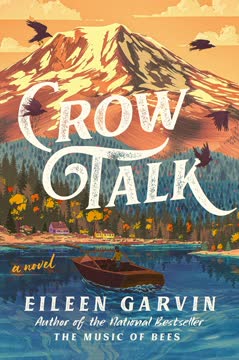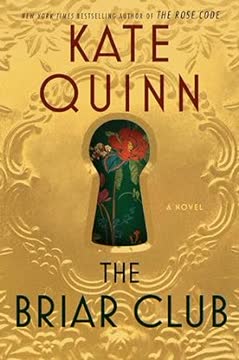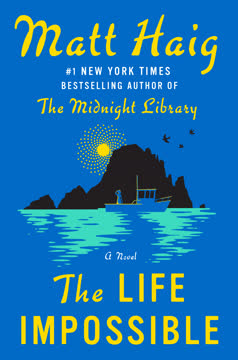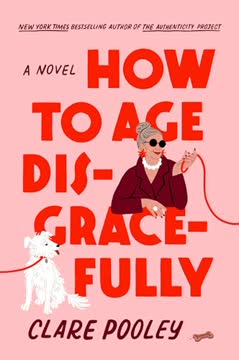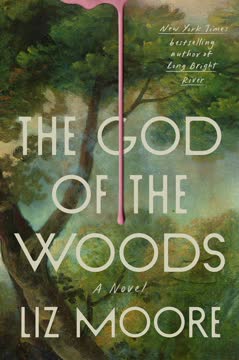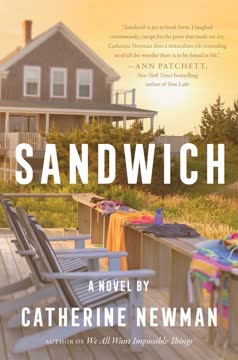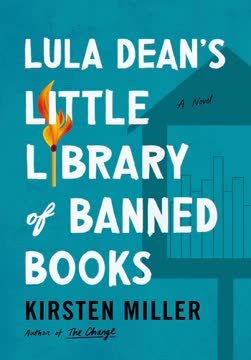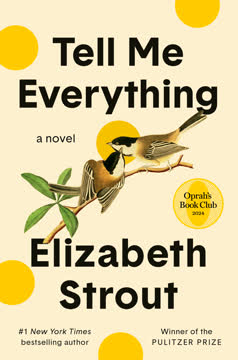Plot Summary
Return to June Lake
Frankie, a young ornithologist, returns to her family's remote cottage at June Lake, hoping to escape the chaos of her unraveling life. She's lost her job, her academic future is uncertain, and her father's recent death haunts her. The lake, surrounded by deep woods and accessible only by boat, is both a sanctuary and a reminder of everything she's lost. As she settles in, the familiar sights and sounds of the forest—birdsong, wind, and water—offer comfort, but also stir up memories and unresolved grief. Frankie's isolation is palpable, and her sense of being unmoored is heightened by the absence of her father and the weight of family expectations. The stage is set for a journey through loss, healing, and unexpected connection.
Birdsong and Beginnings
Anne Ryan, an Irish musician and teacher living in Seattle, arrives at the lake with her husband Tim and their five-year-old son, Aiden. Anne is on leave from her job, struggling with creative block and the aftermath of her best friend's death. Aiden, a bright but silent child, is at the center of Anne's worries—he stopped speaking after a family trauma. The family's arrival at the neighboring, more affluent lake house brings their own tensions and hopes for respite. Anne's longing for home, her complicated marriage, and her fierce love for Aiden are woven into her observations of the world around her. The crows, ever-present, become a symbol of both mystery and resilience, echoing the emotional undercurrents of the story.
The Lost and Found
When Aiden disappears during a sudden storm, panic grips Anne and Tim. The search for their son is frantic and desperate, with Anne's guilt and fear overwhelming her. Meanwhile, Aiden, drawn by curiosity and a sense of safety, finds his way to Frankie's cottage. Frankie, startled to find the silent boy in her home, responds with gentle patience, offering him warmth and hot chocolate. The encounter is wordless but profound, as Frankie's instinctive kindness soothes Aiden's distress. The storm outside mirrors the emotional turmoil within, and the eventual reunion of mother and child is both a relief and a catalyst for deeper reflection on the fragility of family and the power of unexpected connection.
Territories and Boundaries
The arrival of the Magnusen family—Tim, Anne, and Aiden—at the lake disrupts Frankie's solitude. The two families, divided by class, history, and unspoken wounds, circle each other warily. Frankie's memories of her own family's complicated claim to the cottage, and Anne's outsider status as an Irish immigrant, highlight the invisible boundaries that shape their interactions. The crows, with their complex social structures and territorial calls, serve as a metaphor for the human dramas unfolding. As the women observe each other from afar, curiosity and longing for understanding begin to erode the walls between them, setting the stage for a tentative friendship.
Family Histories Unravel
Both Frankie and Anne are haunted by their family histories. Frankie's father's death has left her adrift, and her relationship with her mother is strained by old resentments and unspoken truths. Anne, meanwhile, grapples with the legacy of her Irish upbringing, the loss of her best friend, and the pressures of her marriage to Tim. The lake becomes a crucible where past and present collide, forcing both women to confront the ways their families have shaped—and wounded—them. Through flashbacks and quiet moments, the narrative reveals the deep scars left by alcoholism, ambition, and the longing for acceptance.
The Boy Who Wanders
Aiden, drawn to the woods and the comfort of routine, repeatedly finds his way to Frankie's cottage. His silence is both a mystery and a shield, and Frankie's gentle, nonjudgmental presence allows him to feel safe. She introduces him to her world of birds, especially the crows, and he responds with a rare openness. Their bond grows through shared observation and quiet companionship, offering Aiden a sense of belonging he struggles to find elsewhere. Frankie, in turn, is moved by the boy's vulnerability and intelligence, and her interactions with him begin to heal her own loneliness.
Storms and Strangers
A series of storms—both literal and metaphorical—sweep through the lake. Frankie encounters a poacher in the woods, a threat to the fragile ecosystem she cherishes. The violence of the storm mirrors the emotional upheaval in both families. As trees fall and the power flickers, the characters are forced to confront their fears and dependencies. The crows, ever adaptable, weather the chaos with resilience, their calls echoing through the turmoil. The storm becomes a turning point, stripping away illusions and forcing moments of truth and vulnerability.
The Crow in the Sink
Frankie discovers an injured fledgling crow and takes it into her care, splinting its leg and feeding it by hand. The act of nurturing the bird—whom she names Charlie Crow—rekindles her passion for science and her sense of purpose. The process of observing and documenting Charlie's recovery becomes a metaphor for Frankie's own healing. Aiden is fascinated by the crow, and his interactions with both the bird and Frankie deepen their connection. The crow's gradual return to health and eventual release back to its family is a quiet triumph, symbolizing hope and the possibility of renewal.
Mothers and Meltdowns
Anne's struggles as a mother are laid bare in moments of crisis—Aiden's meltdowns, her own paralyzing guilt, and the judgment of others. The narrative delves into the raw, unvarnished reality of parenting a neurodiverse child, the isolation it brings, and the relentless self-doubt. Anne's relationship with Tim is strained by differing philosophies and the interference of his parents, who push for institutional solutions. Through it all, Anne's love for Aiden is unwavering, even as she fears she is failing him. The support she finds in Frankie, and the small victories with Aiden, offer glimmers of hope.
The Language of Birds
Frankie's research into crow vocalizations becomes a central thread, paralleling the human characters' struggles to communicate. She observes the crows' complex calls—alarm, contentment, mimicry—and begins to theorize about their capacity for specific, learned signals. The birds' ability to adapt, teach, and even name individuals within their group fascinates her. This scientific inquiry mirrors the challenges faced by Anne and Aiden, whose own language is unconventional but deeply meaningful. The motif of "crow talk" becomes a metaphor for the ways we seek connection, understanding, and belonging.
Grief and Ghosts
Both Frankie and Anne are haunted by ghosts—Frankie by her father and the unraveling of her family, Anne by her lost friend and the fear of losing her son to silence. The narrative weaves together memories, dreams, and fairy tales, blurring the line between past and present. The act of storytelling—whether through song, science, or myth—becomes a way to process grief and keep the lost close. The crows, with their funerals and rituals, offer a model for communal mourning and the endurance of love beyond death.
The Crow Funeral
Frankie observes a gathering of crows holding what appears to be a funeral for a fallen member. The birds' collective mourning is both mysterious and deeply moving, offering a lesson in empathy and the importance of community. This moment crystallizes Frankie's understanding of the interconnectedness of all living things and the necessity of bearing witness to both joy and sorrow. The crow funeral becomes a turning point, inspiring her to pursue her research with renewed vigor and to seek reconciliation with her own family.
Letters and Legacies
The reading of her father's will forces Frankie to confront unresolved tensions with her mother and brother. The fate of the cottage hangs in the balance, threatened by legal disputes and old grievances. Meanwhile, Anne receives a long-awaited diagnosis for Aiden, which brings both relief and new challenges. Letters—official, personal, and unsent—become vehicles for truth-telling, apology, and the passing on of wisdom. Through painful conversations and small acts of kindness, both families begin to find a path toward healing and acceptance.
The Breaking Point
A series of crises—academic betrayal, family lawsuits, and the threat of losing the cottage—push Frankie to her breaking point. Anne, facing the prospect of institutionalizing Aiden and the collapse of her marriage, is similarly brought low. Both women are forced to reckon with the limits of their endurance and the necessity of choosing themselves and their children. The crows, resilient and ever-present, offer a model for survival and adaptation in the face of overwhelming odds.
The Healing Walk
A transformative walk through the woods brings Anne and Frankie together in a moment of vulnerability and mutual support. They share stories of loss, hope, and the small miracles that sustain them. The act of walking, observing, and listening becomes a form of therapy, allowing both women to lay down their burdens and open themselves to possibility. Their friendship, forged in adversity, becomes a source of strength and inspiration.
The Naming of Friends
As the season turns, the bonds between Frankie, Anne, and Aiden deepen. The crows, recognizing Frankie as an ally, seem to name her in their own language—a gesture of acceptance and gratitude. Aiden, too, finds his place among the birds and the people who love him. The act of naming—of being seen and acknowledged—becomes a powerful affirmation of identity and connection. The characters, once isolated by grief and difference, find themselves part of a larger, interwoven community.
The Storm and the Search
A violent storm sweeps through the lake, toppling trees and threatening lives. In the chaos, Anne goes missing, and the search for her becomes a test of love, resilience, and community. Frankie, Tim, and the others band together, braving the elements and their own fears to bring Anne home. The ordeal strips away pretense and forces each character to confront what truly matters. The crows, weathering the storm with their usual tenacity, serve as a reminder of the strength found in unity and perseverance.
The Return of Voice
In the aftermath of the storm and Anne's rescue, Aiden's voice returns. The moment is miraculous, a testament to the power of patience, love, and the right environment. His words, simple and profound, signal a new beginning for the family. Anne and Tim, humbled and changed by the ordeal, recommit to each other and to their son. Frankie, having found her own voice through science and friendship, looks toward the future with hope. The crows, ever watchful, bear witness to the healing and renewal that have taken root at June Lake.
Characters
Frankie O'Neill
Frankie is a young ornithologist whose life has been upended by academic betrayal, family loss, and unresolved grief. Her return to June Lake is both an escape and a search for meaning. Frankie's relationship with her late father is central to her identity, and her strained connection with her mother and brother adds layers of complexity. She is deeply observant, attuned to the natural world, and finds solace in the company of birds—especially crows, whose intelligence and social bonds mirror her own longing for connection. Through her care for an injured crow and her growing friendship with Anne and Aiden, Frankie gradually reclaims her sense of purpose and belonging, learning to forgive herself and others.
Anne Ryan
Anne is an Irish musician and teacher living in Seattle, struggling with creative block and the aftermath of her best friend's death. Her marriage to Tim is fraught with cultural differences, family pressures, and the challenges of raising a neurodiverse child. Anne's love for Aiden is fierce and unwavering, but she is haunted by guilt and the fear of failing him. Her longing for home and her struggle to find her voice—both literal and metaphorical—drive her journey. Through her friendship with Frankie and her willingness to confront painful truths, Anne finds the strength to heal, create, and advocate for her son.
Aiden Magnusen
Aiden is a five-year-old boy whose sudden withdrawal into silence after a family trauma becomes the central mystery and challenge of the novel. Bright, curious, and deeply sensitive, Aiden finds comfort in routine, music, and the natural world—especially birds. His bond with Frankie and the crows is transformative, offering him a sense of safety and understanding. Aiden's journey from silence to speech is both a personal triumph and a testament to the power of patience, love, and the right environment. He is the heart of the story, his struggles and victories illuminating the complexities of neurodiversity and the resilience of the human spirit.
Tim Magnusen
Tim is Anne's husband, a newspaper executive caught between family expectations and his own desires. He loves Anne and Aiden but is often at a loss for how to support them, defaulting to practical solutions and the advice of his overbearing parents. Tim's struggle to understand and accept Aiden's differences, and his tendency to prioritize appearances and tradition, create tension in his marriage. Over the course of the novel, Tim is forced to confront his own limitations and the need to choose love and authenticity over conformity and control.
Judith O'Neill
Judith is Frankie's mother, a woman hardened by loss, disappointment, and the demands of survival. Her relationship with Frankie is fraught with misunderstanding and unspoken pain, particularly around the legacy of alcoholism and the unraveling of the family after Jack's death. Judith's desire for control and her reluctance to show vulnerability mask a deep well of love and regret. Through painful confrontations and moments of unexpected tenderness, Judith and Frankie begin to find their way back to each other, learning to forgive and accept the imperfect love that binds them.
Jack O'Neill
Though deceased at the novel's start, Jack's presence looms large over Frankie and her family. Charismatic, generous, and flawed, Jack's struggles with alcoholism and his untimely death are the catalyst for much of the novel's grief and conflict. His love for Frankie and his passion for the natural world are enduring gifts, and his absence forces his family to reckon with their own wounds and the possibility of healing.
Charlie Crow
Charlie is the young crow Frankie rescues and nurtures, serving as both a literal and symbolic thread throughout the novel. His recovery and eventual return to his family mirror the healing journeys of the human characters. Charlie's presence draws Aiden out of his shell and rekindles Frankie's scientific curiosity, embodying the themes of adaptation, communication, and the transformative power of care.
Patrick O'Neill
Patrick is Frankie's older brother, caught between loyalty to his mother and sister and his own unspoken grief. He is a stabilizing force in the family, often mediating conflicts and providing practical support. Patrick's own desires and disappointments are understated but significant, and his journey toward self-acceptance and agency parallels the broader themes of the novel.
Tim's Parents (Tim Senior and Christi)
Tim's parents represent the weight of family expectation and the dangers of prioritizing appearances over authenticity. Their well-intentioned but misguided interventions in Anne and Tim's marriage, and their push for institutional solutions for Aiden, create conflict and highlight the generational and cultural divides at play. Their inability to see Aiden for who he is underscores the novel's critique of conformity and the importance of acceptance.
Hank Hansen
Hank is Jack's best friend and a surrogate grandfather to Frankie and Patrick. His loyalty, kindness, and quiet wisdom provide a counterpoint to the chaos and pain of the O'Neill family's struggles. Hank's presence is a reminder of the enduring power of chosen family and the importance of community in times of loss.
Plot Devices
Interwoven Narratives and Multiple Perspectives
The novel employs a dual narrative structure, alternating between Frankie's and Anne's perspectives. This allows for a rich exploration of parallel journeys—both women grappling with grief, identity, and the challenges of motherhood. Their stories intersect and diverge, creating a tapestry of interconnected lives. The use of flashbacks, dreams, and fairy tales deepens the emotional resonance and blurs the boundaries between past and present, reality and myth.
Bird Motifs and Scientific Observation
Birds—especially crows—are central to the novel's imagery, symbolism, and structure. Frankie's scientific observations of crow behavior serve as both literal research and metaphor for human relationships. The detailed descriptions of bird calls, nesting, and social structures parallel the characters' struggles with communication, belonging, and adaptation. The recurring motif of "crow talk" becomes a lens through which the characters—and readers—are invited to reconsider the nature of language, connection, and community.
Foreshadowing and Fairy Tales
The novel weaves in fairy tales, myths, and folk stories, often as chapter epigraphs or interludes. These stories—of lost children, enchanted birds, and magical transformations—foreshadow the characters' journeys and offer alternative ways of understanding their struggles. The blending of scientific fact and myth creates a sense of wonder and possibility, suggesting that healing and transformation are both natural and magical processes.
Symbolic Storms and Natural Disasters
The storms that sweep through June Lake are both plot catalysts and symbols of emotional upheaval. They force the characters into moments of crisis, stripping away pretense and compelling acts of courage, vulnerability, and connection. The aftermath of the storms—downed trees, power outages, and the need for communal effort—mirrors the process of rebuilding and healing in the wake of personal disaster.
The Return of Voice and the Power of Listening
Aiden's journey from silence to speech is mirrored by the adults' struggles to find their own voices—whether through music, science, or honest conversation. The novel foregrounds the importance of listening—truly hearing the needs, fears, and hopes of others—as a prerequisite for understanding and connection. The crows' complex vocalizations serve as both inspiration and metaphor for the human characters' efforts to communicate across difference.
Analysis
Crow Talk is a luminous meditation on grief, resilience, and the intricate ways we seek connection in a world marked by loss and change. Through the parallel journeys of Frankie and Anne—two women separated by background but united by longing—the novel explores the challenges of motherhood, the wounds of family, and the redemptive power of friendship. The crows, with their intelligence, adaptability, and communal rituals, serve as both literal subjects of scientific inquiry and potent symbols of survival and hope. The narrative's interweaving of scientific observation, myth, and personal history invites readers to reconsider the boundaries between human and animal, fact and story, silence and speech. At its heart, Crow Talk is a celebration of the small, everyday acts of care—listening, nurturing, forgiving—that make healing possible. It reminds us that belonging is not a given, but a practice; that language takes many forms; and that, like the crows, we are at our best when we gather, mourn, and sing together. The novel's ultimate lesson is one of radical acceptance: of ourselves, our loved ones, and the wild, unpredictable world we inhabit.
Last updated:
Review Summary
Crow Talk received mostly positive reviews, with readers praising its beautiful prose, vivid descriptions of nature, and exploration of themes like grief, friendship, and family. Many appreciated the detailed information about birds, especially crows. Some found the pacing slow and character development lacking, while others felt deeply connected to the story. The book's portrayal of a nonverbal child and its Pacific Northwest setting were highlights for many readers. Overall, it was seen as a touching, well-crafted novel with a few minor shortcomings.
Similar Books
Download PDF
Download EPUB
.epub digital book format is ideal for reading ebooks on phones, tablets, and e-readers.
